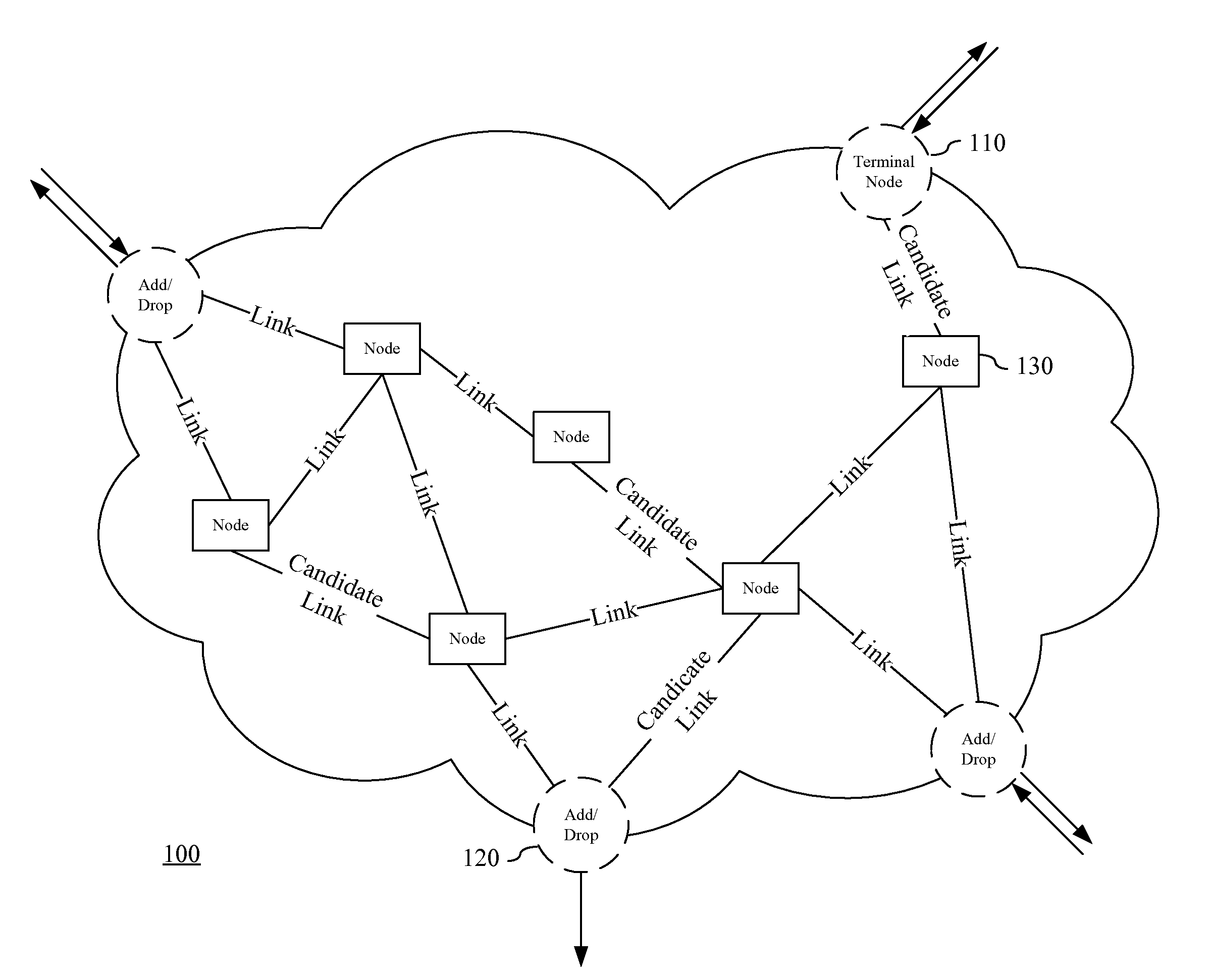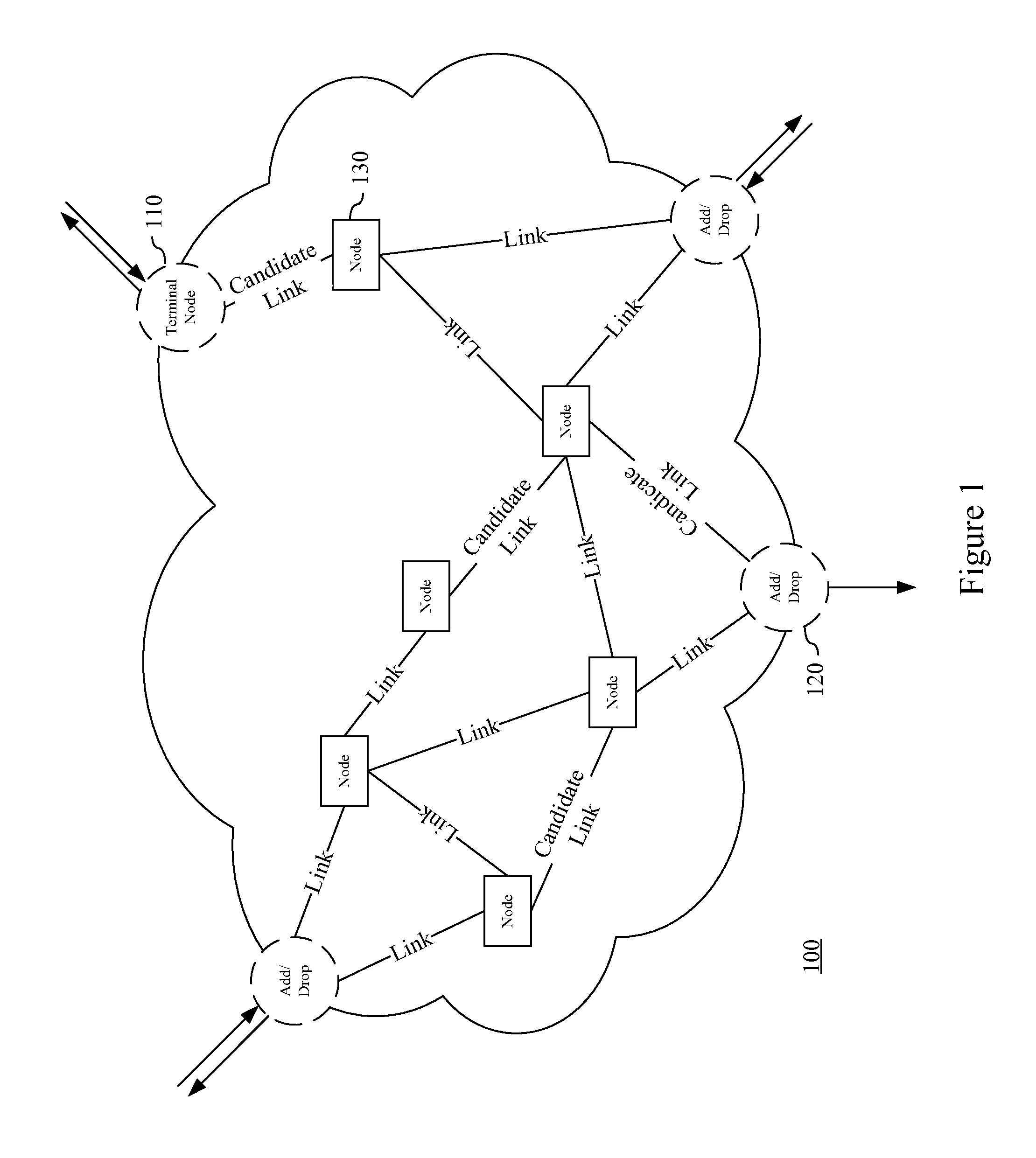Network planning and optimization of equipment deployment
a network and equipment technology, applied in the field of network equipment deployment analysis, can solve the problems of equipment providers losing deployment bids, difficulty in finding a properly balanced solution, and complex task of deployment of cost-effective and fault-tolerant networks, and achieve the effect of sufficient bandwidth and connectivity, and enhanced performance of nodes
- Summary
- Abstract
- Description
- Claims
- Application Information
AI Technical Summary
Benefits of technology
Problems solved by technology
Method used
Image
Examples
Embodiment Construction
[0032]Embodiments of the present invention provide systems, devices and methods for improving the efficient deployment and configuration of networking equipment within a network build-out. In certain embodiments of the invention, an iterative analysis of inter-node equipment placement and connectivity, and inter- and intra-node traffic flow is performed to identify a preferred deployment solution. This analysis of deployment optimization takes into account both configurations from a network node perspective as well as from a network system perspective. Deployment solutions are iteratively progressed and analyzed to determine a preferred solution based on both the cost of deployment and satisfaction of the network demands. In various embodiments of the invention, a baseline marker is generated from which the accuracy of the solution may be approximated that suggests to an engineer whether the deployment has approached an optimal solution.
[0033]In the following description, for purpos...
PUM
 Login to View More
Login to View More Abstract
Description
Claims
Application Information
 Login to View More
Login to View More - R&D
- Intellectual Property
- Life Sciences
- Materials
- Tech Scout
- Unparalleled Data Quality
- Higher Quality Content
- 60% Fewer Hallucinations
Browse by: Latest US Patents, China's latest patents, Technical Efficacy Thesaurus, Application Domain, Technology Topic, Popular Technical Reports.
© 2025 PatSnap. All rights reserved.Legal|Privacy policy|Modern Slavery Act Transparency Statement|Sitemap|About US| Contact US: help@patsnap.com



